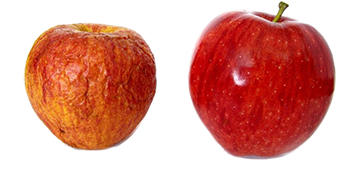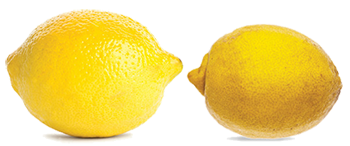 If the quality of your website is less than great, you are losing traffic from new and previous visitors.
If the quality of your website is less than great, you are losing traffic from new and previous visitors.
We'll show you how to boost the quality of your site so you don't fall into this trap.
In addition to human web visitors being turned off by poor-quality websites, Google's automated software gives them low scores, making them nearly invisible in search results.
That's a trap that's hard to get out of without significantly improving site quality and hoping Google will change its mind.
There are a few website characteristics that impact its quality (for humans and Google's software):
Content — Does the content help visitors do whatever they came to the site to do?
Visuals — Do the images and other visual elements make the website attractive to hold visitors' attention?
Performance — Does the site load quickly and have no technical problems? Does it work equally well on desktops, laptops, tablets, and phones?
Usability — Can the site be used by people with auditory, visual, physical, or cognitive issues?
Given the characteristics above, here are ways to improve the quality of your website:
Make sure you can clearly state the goal of your website.
Know who your target audience is and what they're looking for.
Ensure that what you provide aligns with your visitors' expectations. If they don't see what they need quickly, they're going to leave your site which further hurts your score in Google search results.
Group your website content logically so you can determine which pages (and how many) you should have.
Avoid putting too much information on one page. As long as they flow into each other, it's better to have more short pages than fewer long ones.
Make sure the visual design of your site is appealing with your target audience.
A clean layout that aligns with your goals for the site and what visitors are looking for will result in a high quality site.
Determine what you need to say to visitors, the best way to say it, and how often it needs to be updated.
Understand that on the web, most people don't read — they skim. Keep content blocks short and use visual “guideposts” like section headings.
Consider hiring a professional web copywriter, who's trained to create content specifically for web consumption.
Use visuals like images and videos where they make sense, but make sure they're high quality.
And don't forget to include clear calls-to-action (CTAs) so visitors know exactly what you want them to do on each web page. CTAs can be buttons to click to buy something, links to more information or contact forms, newsletter subscribe buttons, etc.
If you think of a website like a house, the navigation is all the doors that let you go from one room to another.
Make your web navigation simple, easy, and logical.
Use clear, short words so visitors understand where they'll go when they click a navigation link.
A straightforward navigation also helps Google “understand” your site and boost its ranking.
A high quality website exhibits good performance, which means a few things.
First, it loads quickly, even on slower Internet connections.
Second, it's fully “mobile responsive” so that it works regardless of device type (desktop, laptop, tablet, or phone).
Third, all links on the site, whether they go to other pages, or to other websites, work correctly and are not broken.
A site with good search engine optimization (SEO) is critical to ranking higher in Google search results.
These technical considerations should be built into the site by your web development team and tested prior to launch and periodically after launch.
A website seems like a one-way communications tool, but it doesn't have to be.
Higher quality sites set up ways for visitors to get in touch.
That could be a simple “contact us” form, a “chatbot” that interacts with visitors, or a survey people can respond to.
 Just like fruit, the fresher a website is, the higher its quality.
Just like fruit, the fresher a website is, the higher its quality.
Returning visitors who see updated and timely information will have a more positive interaction.
And sites that update more frequently also earn a higher ranking score from Google.
So try to refresh your content on a regular basis.
You can check your analytics data to see which pages are the most popular (and which aren't). That can provide useful information and what people are actually looking at, helping you add new content and update existing content.
Creating and maintaining a high quality site is important for your visitors and for your Google ranking.
By paying attention to a few areas, you can turn a mediocre, poorly-performing website into one that constantly gets new visitors and return visits from people who've been there before.
Get in touch if you'd like to learn more about how to make this happen.